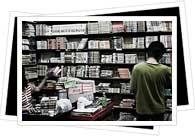
Argentina has a strong literary tradition and has produced some of the world's most well respected writers, whose works have been translated into numerous different languages. Literature in Argentina is varied and there are many large bookshops and libraries all over the country selling national and international books.
The indigenous and precolombian inhabitants of Argentina did not have writing systems meaning that folk stories were passed down the generations through an oral storytelling tradition. The first recorded literary publications to come out of Argentina are the poetry and short stories of Pedro González de Prado and Matías Rojas de Oquendo in the 1550's.
The seventeenth and eighteenth centuries saw the emergence of other poets like Luis de Tejeda, and towards the end of the nineteenth century, the search for a non-european national identity gave rise to Gauchoesque literature, in which a somewhat romanticised image of the Gaucho was developed.
However, it was not until the Latin American Boom of the 1960's and 70's that Argentina's literary scene really began to flourish. Whilst magical realism took Latin America by storm, Argentina jumped on the bandwagon and this unusual take on reality became very apparent. The term is frequently used to describe the works of Argentine greats like Jorge Luis Borges and Julio Cortázar. Magical Realism was first associated with the works of Colombian author, Gabriel García Márquez and represents something quintessentially Latin American. Whilst foreign readers may find these elements fantastical and impossible, it is crucial for understanding the workings of Latin America, that these authors conceive them to be things that are very much possible within their world.
Borges and Cortázar are the most common names to spring to mind when talking of Argentine literature and the works they have produced can help us to gain a better understanding of Argentine culture. On the one hand, they can be criticised for the strong European style and influences so visible in their writing. This is a natural progression from the time both authors spent abroad in European countries. However, this can also be seen as something characteristically Argentine, given that a large majority of the population is of European descent, it has become profoundly rooted to the Argentine literary tradition, rather than just being something which has been borrowed.
The postboom of the 1980's gave a voice to more female writers in Latin America and the literature which came out of Argentina was notably reflective of the harsh military dictatorship which the country had lived through. Works like Manuel Puig's 1984 'Beso de la Mujer Araña' ('Kiss of the Spider Woman') serve as telling testaments for the social unrest felt throughout the country. In this dark novel which has since been turned into a play and film, we follow the dialogue of two tortured prisoners in a prison cell. He stresses the importance of popular culture as a form of escapism, the existence of homosexuality and the way in which human understanding can transcend even the most painful circumstances.
Today Argentina's literary scene continues to thrive with contemporary writers taking influences from the country's own past as well as european and north american literature which is readily available throughout the country.